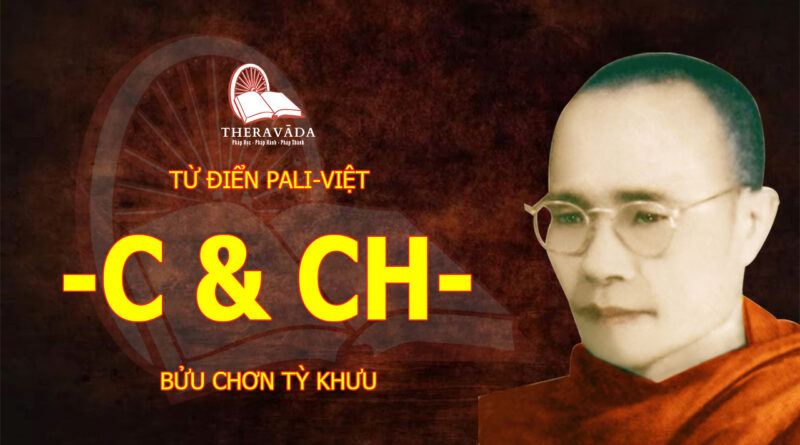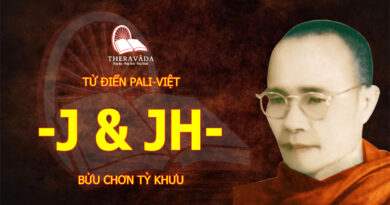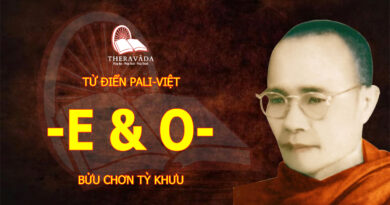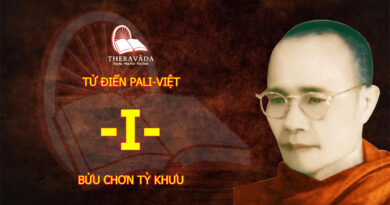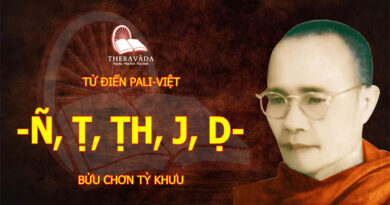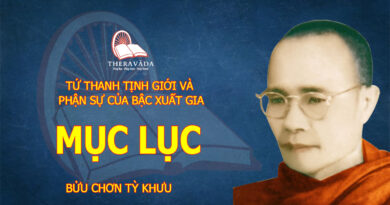Chapter 8: Awareness And Equanimity
Chapter 8. AWARENESS AND EQUANIMITY
Awareness and equanimity—this is Vipassana meditation. When practised together, they lead to liberation from suffering. If either is weak or lacking, it is not possible to progress on the path toward that goal. Both are essential, just as a bird requires two wings to fly or a cart needs two wheels to move. And they must be equally strong. If one wing of a bird is weak and the other powerful, it cannot fly properly. If one wheel of a cart is small and the other large, it will keep going around in circles. The meditator must develop both awareness and equanimity together in order to advance along the path.
We must become aware of the totality of mind and matter in their subtlest nature. For this purpose it is not enough merely to be mindful of superficial aspects of body and mind, such as physical movements or thoughts. We must develop awareness of sensations throughout the body and maintain equanimity toward them.
If we are aware but lack equanimity, then the more conscious we become of the sensations within and the more sensitive we become to them, the more likely we are to react, thereby increasing suffering. On the other hand, if we have equanimity, but know nothing about the sensations within, then this equanimity is only superficial, concealing reactions that are constantly going on unknown in the depths of the mind. Thus we seek to develop both awareness and equanimity at the deepest level. We seek to be conscious of everything that happen within and at the same time not to react to it, understanding that it will change.
This is true wisdom: the understanding of one’s own nature, an understanding achieved by direct experience of truth deep within oneself. This is what the Buddha called yathā-bhūta-ñāna-dassana, the wisdom that arises on observing reality as it is. With this wisdom one can emerge from suffering. Every sensation that occurs will give rise only to the understanding of impermanence. All reactions cease, all saṅkhāras of craving and aversion. By learning how to observe reality objectively, one stops creating suffering for oneself.
The Stock of Past Reactions
Remaining aware and balanced is the way to stop producing new reactions, new sources of misery. But there is another dimension to our suffering which must also be dealt with. By ceasing to react from this moment forward, we may create no further cause of misery, but each one of us has a stock of conditioning, the sum total of our past reactions. Even if we add nothing new to the stock, the accumulated old saṅkhāras will still cause us suffering.
The word saṅkhāra may be translated as “formation,” both the act of forming and that which is formed. Every reaction is the last step, the result in a sequence of mental processes, but it can also be the first step, the cause in a new mental sequence. Every saṅkhāra is both conditioned by the processes leading to it and also conditions the processes that follow.
The conditioning operates by influencing the second of the mental functions, perception (discussed in Chapter Two). Consciousness is basically undifferentiating, non-discriminating. Its purpose is merely to register that contact has occurred in mind or body. Perception, however, is discriminative. It draws on the store of past experiences in order to evaluate and categorize any new phenomenon. The past reactions become the points of reference by which we seek to understand a new experience; we judge and classify it in accordance with our past saṅkhāras.
In this way the old reactions of craving and aversion influence our perception of the present. Instead of seeing reality, we see “as through a glass darkly.” Our perception of the world outside and of the world within is distorted and blurred by our past conditioning, our preferences and prejudices. In accordance with the distorted perception, an essentially neutral sensation immediately becomes pleasant or unpleasant. To this sensation we again react, creating fresh conditioning which distorts our perceptions further. In this way each reaction becomes the cause of future reactions, all conditioned by the past and conditioning the future in turn.
The dual function of saṅkhāra is shown in the Chain of Conditioned Arising (see pp. 48 & 49). The second link in the chain is saṅkhāra, which is the immediate precondition for the arising of consciousness, the first of the four mental processes. However, saṅkhāra is also last in the series of processes, following consciousness, perception, and sensation. In this form it reappears, later in the chain, after sensation, as the reaction of craving and aversion. Craving or aversion develop into attachment, which becomes the impetus for a new phase of mental and physical activity. Thus the process feeds on itself. Every saṅkhāra unleashes a chain of events that result in a new saṅkhāra, which unleashes a fresh chain of events in an endless repetition, a vicious circle. Every time that we react, we reinforce the mental habit of reaction. Every time that we develop craving or aversion, we strengthen the tendency of the mind to continue generating them. Once the mental pattern is established, we are caught in it
For example, a man prevents someone from attaining a desired object. The thwarted person believes that man is very bad and dislikes him. The belief is based not on a consideration of the man’s character, but only on the fact that he has frustrated the second person’s desires. This belief is deeply impressed in the unconscious mind of the thwarted person. Every subsequent contact with that man is coloured by it and gives rise to unpleasant sensation, which produces fresh aversion, which strengthens further the image. Even if the two meet after an interval of twenty years, the person who was thwarted long ago immediately thinks of that man as very bad and again feels dislike. The character of the first man may have changed totally in twenty years, but the second one judges him using the criterion of past experience. The reaction is not to the man himself, but to a belief about him based on the original blind reaction and therefore biased.
In another case, a man helps someone to achieve a desired object. The person who received assistance believes that man is very good, and likes him. The belief is based only on the fact that the man has helped to satisfy the second person’s desires, not on careful consideration of his character. The positive belief is recorded in the unconscious and colours any subsequent contact with that man, giving rise to pleasant sensation, which results in stronger liking, which further strengthens the belief. No matter how many years pass before the two meet again, the same pattern repeats itself with each fresh contact. The second person reacts not to the man himself, but only to his belief about him, based on the original blind reaction.
In this way a saṅkhāra can give rise to fresh reaction, both immediately and in the distant future. And each subsequent reaction becomes the cause of still further reactions, which are bound to bring nothing but more misery. This is the process of repetition of reactions, of suffering. We assume that we are dealing with external reality when actually we are reacting to our sensations, which are conditioned by our perceptions, which are conditioned by our reactions. Even if from this moment we stop generating new saṅkhāras, still we have to reckon with the accumulated past ones. Because of this old stock, a tendency to react will remain and at any time may assert itself, generating new misery for us. So long as this old conditioning persists, we are not entirely free from suffering.
How can one eradicate the old reactions? To find the answer to this question it is necessary to understand more deeply the process of Vipassana meditation.
Eradicating Old Conditioning
In practising Vipassana, our task is simply to observe sensations throughout the body. The cause of any particular sensation is beyond our concern; it is sufficient to understand that every sensation is an indication of an internal change. The change may be either mental or physical in origin; mind and body function interdependently and often cannot be differentiated. Whatever occurs at one level is likely to be reflected at the other.
At the physical level, as discussed in Chapter Two (pp. 25-26), the body is composed of subatomic particles—kalāpas—which every moment arise and pass away with great rapidity. As they do so, they manifest in an infinite variety of combinations the basic qualities of matter—mass, cohesion, temperature, and movement— producing within us the entire range of sensations.
There are four possible causes for the arising of kalāpas. The first is the food we eat; the second is the environment in which we live. But whatever occurs in the mind has an effect on the body and can be responsible for the arising of kalāpas. Hence particles may also arise because of a mental reaction occurring at the present moment, or because of a past reaction which influences the present mental state. In order to function, the body requires food. If one stops feeding the body, however, it will not collapse at once. It can continue to support itself, if necessary, for weeks by consuming the energy stored in its tissues. When all the stored energy is consumed, at last the body will collapse and die: the physical flow comes to an end.
In the same way the mind requires activity in order to maintain the flow of consciousness. This mental activity is saṅkhāra. According to the chain of conditioned arising, consciousness originates from reaction (see p. 48). Each mental reaction is responsible for giving impetus to the flow of consciousness. And while the body requires food only at intervals throughout the day, the mind requires constant fresh stimulation. Without it, the flow of consciousness cannot continue even for an instant. For example, at a given moment one generates aversion in the mind: in the next moment the consciousness that arises is the product of this aversion, and so on, moment after moment. One keeps repeating the reaction of aversion from one moment to the next, and keeps giving new input to the mind.
By practising Vipassana, however, the meditator learns not to react. At a given moment, he creates no saṅkhāra, he gives no fresh stimulation to the mind. What happens then to the psychic flow? It does not stop at once. Instead, one or another of the accumulated past reactions will come to the surface of the mind in order to sustain the flow. A past conditioned response will arise and from this base consciousness continues for another moment. The conditioning will appear at the physical level by causing a particular type of kalāpa to arise, which one then experiences as sensation within the body. Perhaps a past saṅkhāra of aversion arises, manifesting itself as particles, which one experiences as an unpleasant burning sensation within the body. If one reacts to that sensation with disliking, fresh aversion is created. One has started giving fresh input to the flow of consciousness, and there is no opportunity for another of the stock of past reactions to rise to the conscious level.
However, if an unpleasant sensation occurs and one does not react, then no new saṅkhāras are created. The saṅkhāra that has arisen from the old stock passes away. In the next moment, another past saṅkhāra arises as sensation. Again, if one does not react, it passes away. In this way, by maintaining equanimity, we allow accumulated past reactions to arise at the surface of the mind, one after another, manifesting themselves as sensations. Gradually, by maintaining awareness and equanimity toward sensation, we eradicate the past conditioning.
So long as conditioning of aversion remains, the tendency of the unconscious mind will be to react with aversion when facing any unpleasant experience in life. So long as conditioning of craving remains, the mind will tend to react with craving in any pleasant situation. Vipassana works by eroding these conditioned responses. As we practise, we keep encountering pleasant and unpleasant sensations. By observing every sensation with equanimity, we gradually weaken and destroy the tendencies of craving and aversion. When the conditioned responses of a certain type are eradicated, one is free of that type of suffering. And when all conditioned responses have been eradicated one after another, the mind is totally liberated. One who well understood this process said,
Impermanent truly are conditioned things, having the nature of arising and passing away. If they arise and are extinguished,
their eradication brings true happiness.1
Every saṅkhāra arises and passes away, only in the next moment to arise again in endless repetition. If we develop wisdom and start observing objectively, the repetition stops and eradication begins. Layer after layer, the old saṅkhāras will arise and be eradicated, provided we do not react. As much as the saṅkhāras are eradicated, that much happiness we enjoy, the happiness of freedom from suffering. If all the past saṅkhāras are eradicated, we enjoy the limitless happiness of full liberation.
Vipassana meditation therefore is a kind of fasting of the spirit in order to eliminate past conditioning. Every moment for the whole of our lives we have generated reactions. Now, by remaining aware and balanced, we achieve a few moments in which we do not react, do not generate any saṅkhāra. Those few moments, no matter how brief, are very powerful; they set in motion the reverse process, the process of purification.
To trigger this process, we must literally do nothing; that is, we must simply refrain from any fresh reaction. Whatever might be the cause of the sensations we experience, we observe them with equanimity. The very act of generating awareness and equanimity will automatically eliminate old reactions, just as lighting a lamp will dispel the darkness from a room.
The Buddha once told a story about a man who had made great gifts of charity. But in concluding, the Buddha commented,
Even if he had performed the greatest charity, it would have been still more fruitful for him to take refuge with an accepting heart in the enlightened one, in the Dhamma, and in all saintly persons. And had he done so, it would have been still more fruitful for him to undertake with an accepting heart the five precepts. And had he done so, it would have been still more fruitful for him to cultivate good will toward all just for the time it takes to milk a cow. And had he done all of these, it would have been still more fruitful for him to develop the awareness of impermanence just for the time it takes to snap one’s fingers.2
Perhaps the meditator is aware of the reality of sensations in the body only for a single moment, and does not react because he understands their transient nature. Even this brief moment will have a powerful effect. With patient, repeated, continuous practice, those few moments of equanimity will increase, and the moments of reaction will decrease. Gradually the mental habit of reacting will be broken and the old conditioning eradicated, until the time comes when the mind is freed of all reactions, past and present, liberated from all suffering.
Bài viết này được trích từ cuốn sách The Art Of Living – Thiền Sư S.N.Goenka và William Hart.

